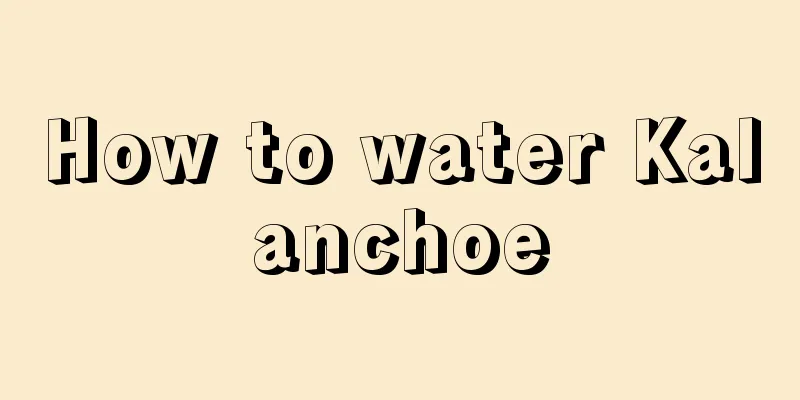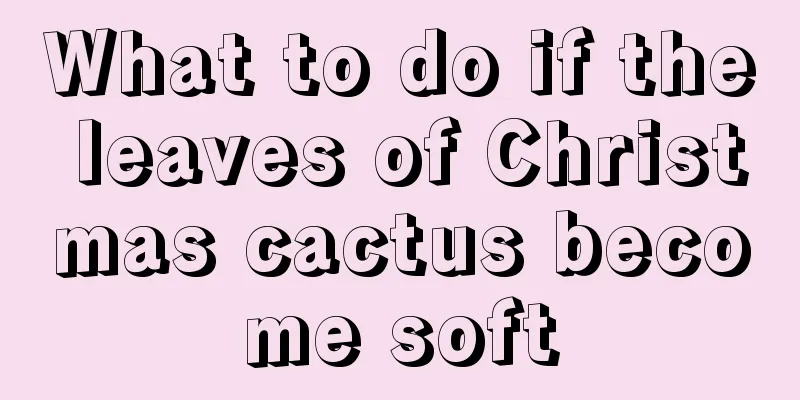How to cultivate monk fruit

1. Maintenance methods1. Temperature: It can be seen from the fact that its distribution area is mainly in the south that it has relatively high requirements for temperature. Therefore, in order to increase the output, the temperature can be controlled within an appropriate range. Especially in winter, if the temperature is too low, a large area of monk fruit may be frozen to death. 2. Light: It does not require particularly high sunlight, and a little scattered light is enough. Too much light is not good, as it may burn the plants. Therefore, you can move it to a cool or semi-shaded place when the sunlight is very strong, and let it receive light when there is mild scattered light. 3. Watering: Monk fruit likes moisture and is slightly drought-resistant. But it is best to provide sufficient water during the growing season, which will help its growth. But water should not accumulate in any season, otherwise its roots will rot. 4. Fertilization: Monk Fruit requires very little fertilizer, so do not apply too much. Basal fertilizer is relatively important and only needs to be applied once or twice during the growth period. 2. Breeding techniques1. Reproduction: Generally speaking, sowing propagation is the most common method, and it is usually carried out over a large area. The fruits can be harvested when they turn from light green to dark green, and then the seeds can be taken out after drying them for a few days. When sowing, pay attention to temperature control, and also ensure appropriate humidity, but not too high. 2. Weeding: For large-scale planting of monk fruit, some weeds often appear in the fields. Their harm is quite large, causing the consumption of nutrients and water, affecting the growth of monk fruit. Therefore, weeding can be done regularly, preferably twice a year. 3. Problem diagnosis and treatment1. Disease: A common one is called "viral disease", which mainly harms the leaves and fruits, causing them to grow deformed. Antitoxic agents can be used for prevention and control, two or three times in a row. There is also "anthracnose", for which you can apply some phosphorus fertilizer and potassium fertilizer at the same time as spraying the medicine. 2. Pests: The main types include termites, yellow melon pests, stink bugs, etc. Different types of insecticides can be sprayed separately. IV. Other issues1. Toxicity: It is non-toxic, but it should not be consumed in large quantities. 2. Can it be raised at home? Generally not, it is usually used as a medicinal material. |
<<: Cultivation method of red birch
>>: How to grow green calyx well
Recommend
Mosquito repellent plant likes shade or sunlight
Does mosquito repellent grass prefer shade or sun...
Foliar fertilizer formula list
The success of crops depends on good fertilizer. ...
How to make Euphorbia obesa bloom more
In fact, the vigorous growth of Euphorbia obesa d...
How much water should be given to spider plants
1. How much to water Whether watering is needed d...
What fertilizer to use for green radish
In addition to adding nutrients to the soil durin...
How to grow larch bonsai
1. Breeding environment 1. Soil: Fertile soil sho...
Cotton growth conditions and characteristics in Xinjiang
Cotton growing conditions in Xinjiang Xinjiang co...
Cultivation methods and precautions of cherry crystal
Breeding method: Water: It is relatively drought-...
How can a gardener water flowers like this? The flowers are growing more and more prosperous, you will be at a loss if you don’t look at them!
If you water it like this, the flower will die an...
Can gardenia be planted in the ground?
Can Gardenia be planted in the ground? Gardenia c...
When is the best time to sow black sesame seeds?
Suitable time for sowing black sesame Black sesam...
When is the best time to repot Christmas cactus (issues to pay attention to when repotting Christmas cactus)
When is the best time to repot Christmas cactus? ...
Add some drink to the flower water, and the flowers will keep blooming for a month, and the whole house will be filled with fragrance!
How to take care of flowers at home? It was still...
Are cheeky plants succulent?
1. The connection between the two Strictly speaki...
The correct way to water cyclamen, what to do if you water too much
1. The correct way to water 1. Watering during th...









